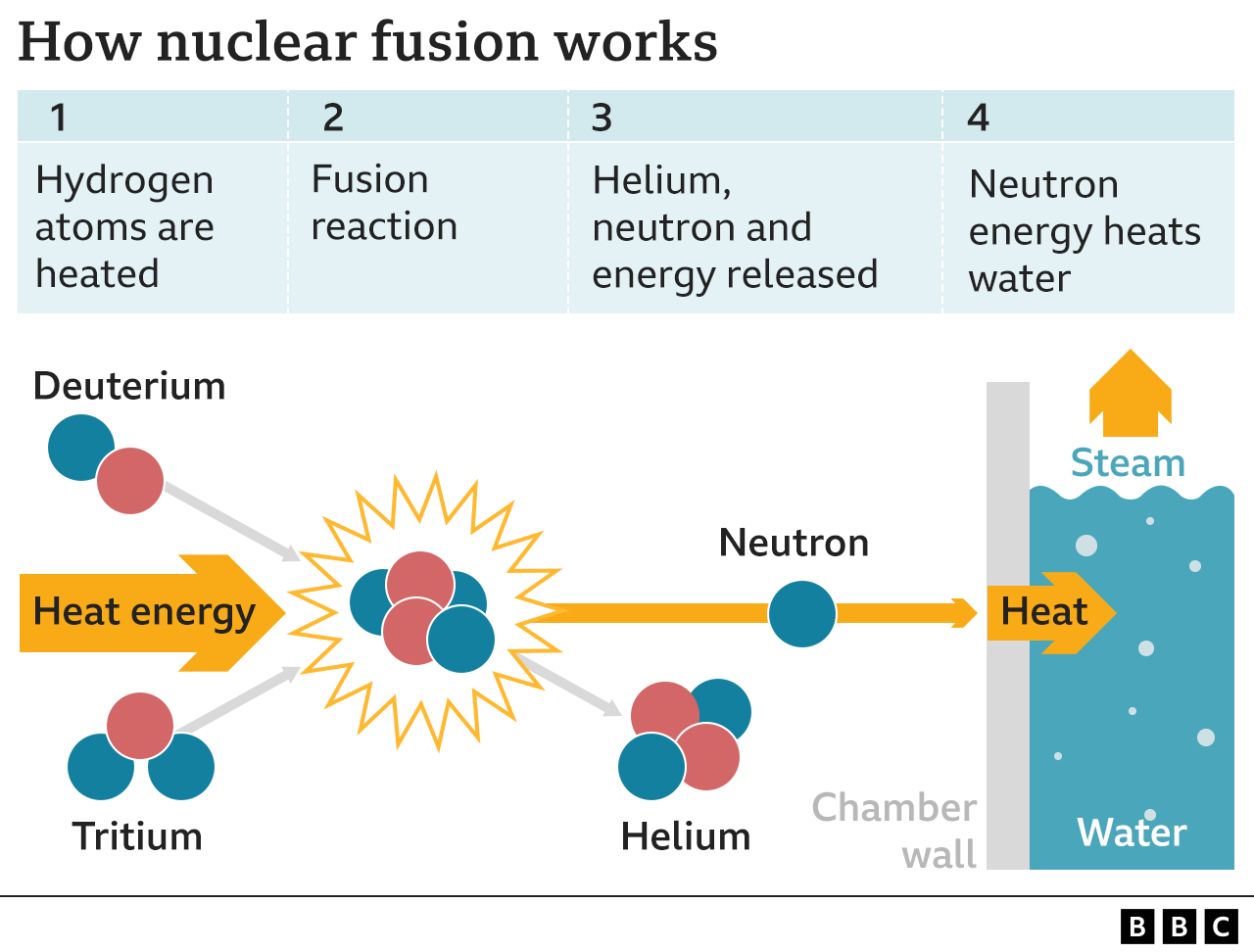Note4Students
From UPSC perspective, the following things are important :
Prelims level: Nuclear Fusion Reaction, ITER
Mains level: NA

Scientists in the United Kingdom have achieved a new milestone in producing nuclear fusion energy or imitating the way energy is produced in the Sun. The record and scientific data from these crucial experiments are a major boost for ITER.
ITER Project
- ITER is international nuclear fusion research and engineering megaproject, which will be the world’s largest magnetic confinement plasma physics experiment.
- The goal of ITER is to demonstrate the scientific and technological feasibility of fusion energy for peaceful use.
Project details
- The project is funded and run by seven member entities—the European Union, India, Japan, China, Russia, South Korea and the United States.
- The EU, as host party for the ITER complex, is contributing about 45 per cent of the cost, with the other six parties contributing approximately 9 per cent each.
- Construction of the ITER Tokamak (doughnut-shaped apparatus) complex started in 2013 and the building costs were over US$14 billion by June 2015.
How does it work?
- Hydrogen plasma will be heated to 150 million degrees Celsius, ten times hotter than the core of the Sun, to enable the fusion reaction.
- The process happens in a doughnut-shaped reactor, called a tokamak, which is surrounded by giant magnets that confine and circulate the superheated, ionized plasma, away from the metal walls.
- The superconducting magnets must be cooled to -269°C (-398°F), as cold as interstellar space.
- Scientists have long sought to mimic the process of nuclear fusion that occurs inside the sun, arguing that it could provide an almost limitless source of cheap, safe and clean electricity.
- Unlike in existing fission reactors, which split plutonium or uranium atoms, there’s no risk of an uncontrolled chain reaction with fusion and it doesn’t produce long-lived radioactive waste.
Back2Basics: Nuclear Fusion
- Nuclear fusion is the process of making a single heavy nucleus (part of an atom) from two lighter nuclei. This process is called a nuclear reaction.
- The nucleus made by fusion is heavier than either of the starting nuclei. It releases a large amount of energy.
- Fusion is what powers the sun. Atoms of Tritium and Deuterium (isotopes of hydrogen, Hydrogen-3 and Hydrogen-2, respectively) unite under extreme pressure and temperature to produce a neutron and a helium isotope.
- Along with this, an enormous amount of energy is released, which is several times the amount produced by fission.
- Scientists continue to work on controlling nuclear fusion in an effort to make a fusion reactor to produce electricity.
How it is different from nuclear fission?
- Simply put, fission is the division of one atom into two (by neutron bombardment), and fusion is the combination of two lighter atoms into a larger one (at a very high temperature).
- Nuclear fission takes place when a large, somewhat unstable isotope (atoms with the same number of protons but a different number of neutrons) is bombarded by high-speed particles, usually neutrons.
UPSC 2022 countdown has begun! Get your personal guidance plan now! (Click here)
Get an IAS/IPS ranker as your 1: 1 personal mentor for UPSC 2024

